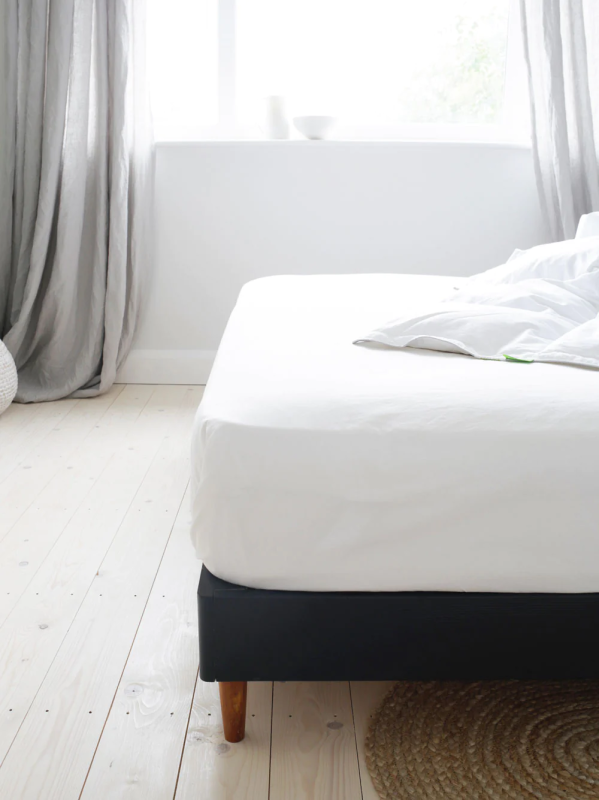News
How frequently should one renew their bedding

How frequently should you update your duvet, pillow, and bed linens? This common inquiry is often posed to us at scooms, and experts provide the following recommendations:
- Duvets: Renew your duvet every 5 years.
- Pillows: Refresh your pillow every 1 to 2 years.
- Sheets, duvet cases, pillowcases: Replace every 5 to 7 years.
- Egyptian cotton sheets, duvet cases, pillowcases: More durable, so consider purchasing new ones every 7 to 12 years.
Surprisingly, the average person tends to keep their duvet for an extended period, around 7.5 years. However, regularly updating your bedding is crucial not only for a good night’s sleep but also for your overall health.
To determine when it’s time to refresh your bedding, consider the following:
- Quality of Sleep: If you find yourself sleeping poorly or feeling uncomfortable in bed, it may indicate a need for new bedding.
- Washability: Assess whether your bedding still washes well. Over time, wear and tear can affect the washing performance.
- Physical Appearance: Check if your bedding looks worn or has visible signs of damage.
Additionally, when evaluating specific bedding items:
- Duvets: Ensure your duvet provides adequate warmth. If you feel cold during the night, it might be time to invest in a higher tog duvet. Check if your duvet has lost its warmth, indicating a need for replacement.
- Pillows: If your pillow has lost its support and becomes flat, consider replacing it for better sleep quality.
Ultimately, understanding the signs of wear and addressing them promptly ensures a comfortable and restful night’s sleep.

Pillows play a crucial role in ensuring proper support for your head and neck during sleep. If you wake up with a stiff or painful neck, it may be an indication that your pillow is no longer providing the necessary support. Similar to mattresses, pillows gradually lose their ability to offer optimal support over time.
Moreover, pillows tend to absorb body oils, dead skin cells, and can attract dust mites. For hygiene reasons alone, it’s advisable not to use the same pillow indefinitely.
Consider the following indicators that your pillow may need replacement:
- Support: Assess whether your pillow adequately supports your head and neck. If you experience discomfort or stiffness, it might be time for a new pillow.
- Shape: Check if your pillow has maintained its original shape. Different fillings have varying lifespans, with natural down and feather pillows generally lasting longer than synthetic ones. However, all pillows eventually lose their shape and require replacement.
Conduct a simple pillow test:
- For Down & Feather Pillows: Do you need to consistently fluff it up for proper head support?
- For Foam & Synthetic Pillows: Has the filling become lumpy or clumpy?
- Has your pillow gone flat?
- Does your pillow fail to provide sufficient support for your head and neck?
- If you fold your pillow in half, does it stay folded?
If you answer YES to any of these questions, it’s a clear sign that you should invest in a new pillow for improved comfort and support during your sleep.

Assessing the condition of your bedding is essential to ensuring its effectiveness and longevity.
Duvets:
After washing your duvet, it should regain its fluffiness with a good shake. However, if the filling appears lumpy or remains compressed after washing, it’s a clear indication that the duvet is no longer providing adequate insulation. In such cases, it’s time to consider a replacement.
Pillows:
Regularly washing your pillow can extend its lifespan. Yet, if the filling no longer regains its shape, remaining flattened or lumpy after washing, drying, and shaking, it’s a sign that your pillow needs replacing.
Bedding Appearance:
Worn-out bedding exhibits visible signs of damage. If your duvet or pillow is falling apart, with filling leaking out due to split seams or thin casing, replacement is imminent. For bed linens such as sheets, duvet covers, or pillowcases, look for signs of wear and tear, including holes, rips, fraying, or bobbling. These indicators suggest the need for a bedding refresh.
Quality of Cotton Sheets:
Quality cotton sheets, with proper care, typically last between five to seven years. However, top-quality sheets made from Egyptian cotton, known for its durability and softness that improves with age, can last even longer—making them a lasting investment in your comfort.

Recycling Your Bedding:
Duvets:
While duvets are not widely recycled, you can inquire with your local council about available options. Instead of discarding old duvets, consider donating them to local animal shelters, where they might find use as bedding for animals.
Pillows:
Pillows are generally not recyclable. Instead of disposal, repurpose old pillows by creating a comfortable pet bed or donating them to animal shelters or friends with pets.
Bed Linen:
Old sheets or duvet covers have various uses. They can serve as dust sheets for painting, be repurposed for making teepees, used for sitting during garden picnics, or become canvases for kids’ art projects. The possibilities are abundant, limited only by your imagination.
Tips for Prolonging Bedding Lifespan:
Duvet:
- Invest in high-quality bedding with a 100% cotton cover for breathability and a thread count of 246 or higher for a tight weave.
- Opt for careful construction, such as box stitch or baffle box, to ensure even distribution of filling and enhanced durability.
- Care for your duvet by airing it daily, avoiding excessive washing (once every 6 to 12 months), and using a quality, breathable cotton duvet cover that shields it from oils and fluids.
Pillow:
- Choose a high-quality pillow with a breathable filling, a 100% cotton cover, and a thread count of 246 or higher.
- Opt for supportive construction, such as a chamber pillow, combining firm and soft fillings for enhanced comfort and durability.
- Protect your pillow with a quality, breathable cotton pillowcase.
Bed Linen:
- Invest in good-quality linen, especially Egyptian cotton, known for durability and softening with each wash.
- Wash sheets, duvet covers, and pillowcases weekly to maintain freshness and protect more expensive bedding items.
- Regular washing helps prevent the buildup of oils, fluids, and dust mites, promoting overall hygiene and health.
Additional Care Tips:
- When ill, change bedding daily or clean pillowcases regularly to prevent the spread of germs and viruses.
- To eliminate germs and viruses, dry sheets and pillowcases in direct sunlight, as UV light is effective in killing microorganisms. Additionally, use a hot iron on pillowcases to ensure thorough bacteria elimination.
